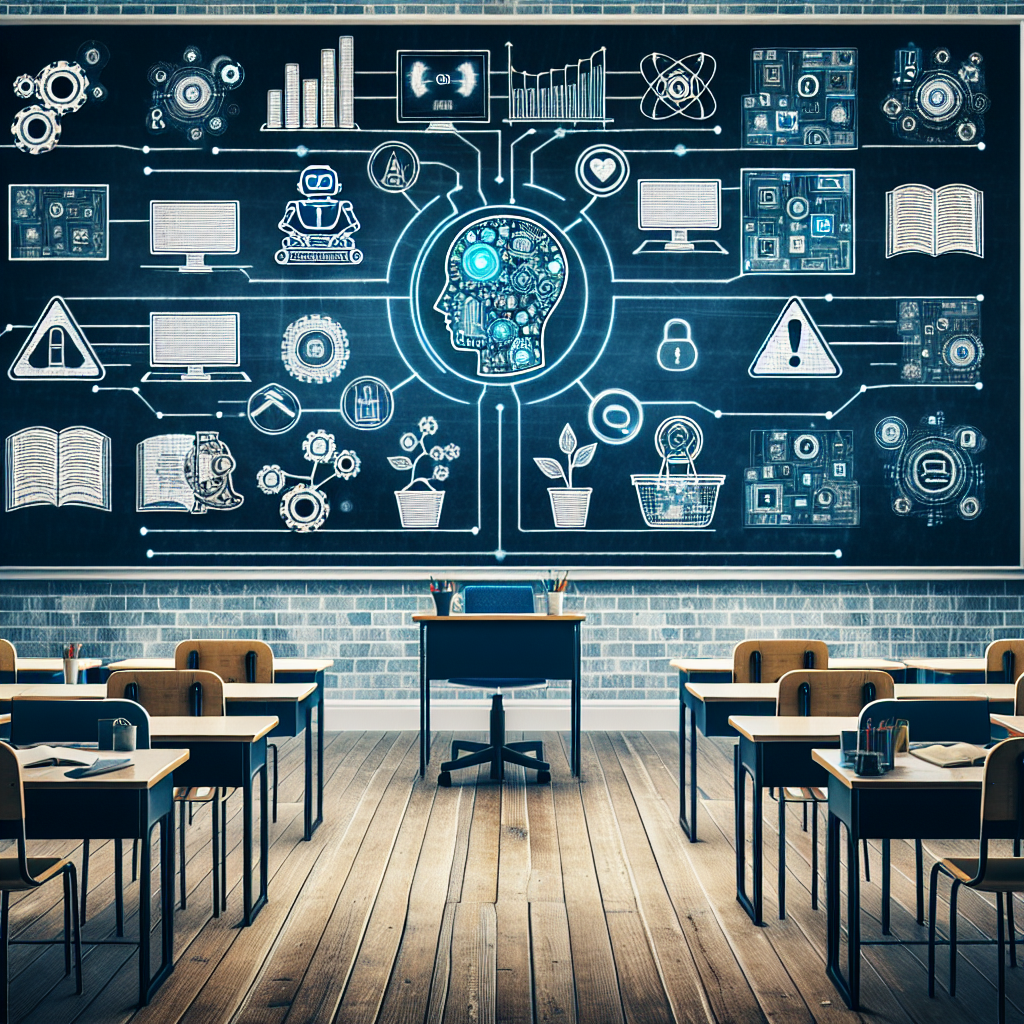Artificial Intelligence (AI) has revolutionized many industries, including education. With the ability to analyze vast amounts of data, personalize learning experiences, and automate administrative tasks, AI has the potential to significantly improve the way students learn and educators teach. However, along with these benefits come risks that need to be carefully considered to ensure that AI is used responsibly and ethically in educational settings.
One of the primary risks of AI in education is the potential impact on learning outcomes. While AI has the ability to personalize learning experiences for students, there is a concern that it may lead to a one-size-fits-all approach that limits students’ ability to think critically and creatively. By relying too heavily on AI for instruction, students may miss out on the opportunity to develop essential skills such as problem-solving, collaboration, and communication.
Another risk of AI in education is the potential for bias and discrimination. AI algorithms are only as good as the data they are trained on, and if that data is biased or incomplete, it can lead to unfair outcomes for certain groups of students. For example, if an AI system is trained on historical data that reflects societal biases, it may perpetuate those biases by making decisions that are discriminatory or unfair.
Furthermore, there is a concern that AI may exacerbate existing inequalities in education. Students from disadvantaged backgrounds may not have access to the same resources or technology needed to benefit from AI-powered learning tools, leading to a widening achievement gap. Additionally, there is a risk that AI could replace human educators, resulting in a loss of the personal connection and mentorship that is essential for student success.
Despite these risks, AI has the potential to revolutionize education in positive ways. By automating administrative tasks such as grading and lesson planning, educators can focus more on individualized instruction and student support. AI can also provide real-time feedback to students, helping them track their progress and identify areas for improvement. Ultimately, the key is to use AI as a tool to enhance, rather than replace, human educators and to ensure that its use is transparent, accountable, and ethical.
FAQs:
Q: How can AI be used to improve learning outcomes in education?
A: AI can be used to personalize learning experiences for students by analyzing their individual strengths and weaknesses. It can also provide real-time feedback to students, helping them track their progress and identify areas for improvement. Additionally, AI can automate administrative tasks such as grading and lesson planning, allowing educators to focus more on individualized instruction and student support.
Q: What are some examples of AI tools used in education?
A: Some examples of AI tools used in education include intelligent tutoring systems, which provide personalized instruction to students based on their individual needs; adaptive learning platforms, which adjust the difficulty of lessons based on student performance; and chatbots, which provide students with instant support and guidance.
Q: How can educators ensure that AI is used responsibly and ethically in education?
A: Educators can ensure that AI is used responsibly and ethically in education by being transparent about how it is being used, ensuring that it is accountable to all stakeholders, and considering the potential impacts on student learning outcomes and equity. Educators should also be mindful of bias and discrimination in AI algorithms and work to mitigate these risks through careful data collection and analysis.
In conclusion, the risks of AI in education are real and must be carefully considered to ensure that its use benefits students and educators. By being mindful of potential biases, inequalities, and ethical concerns, educators can harness the power of AI to enhance learning outcomes and provide personalized, engaging educational experiences for all students. Ultimately, the key is to use AI as a tool to support, rather than replace, human educators and to ensure that its use is transparent, accountable, and ethical.

